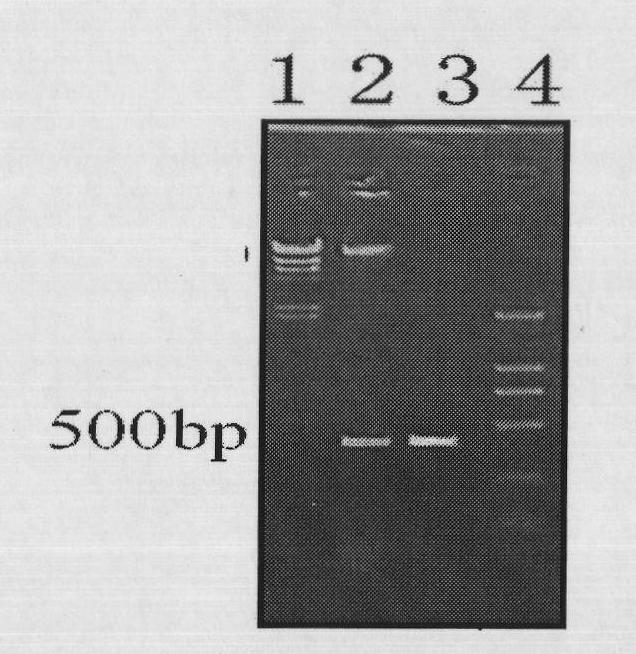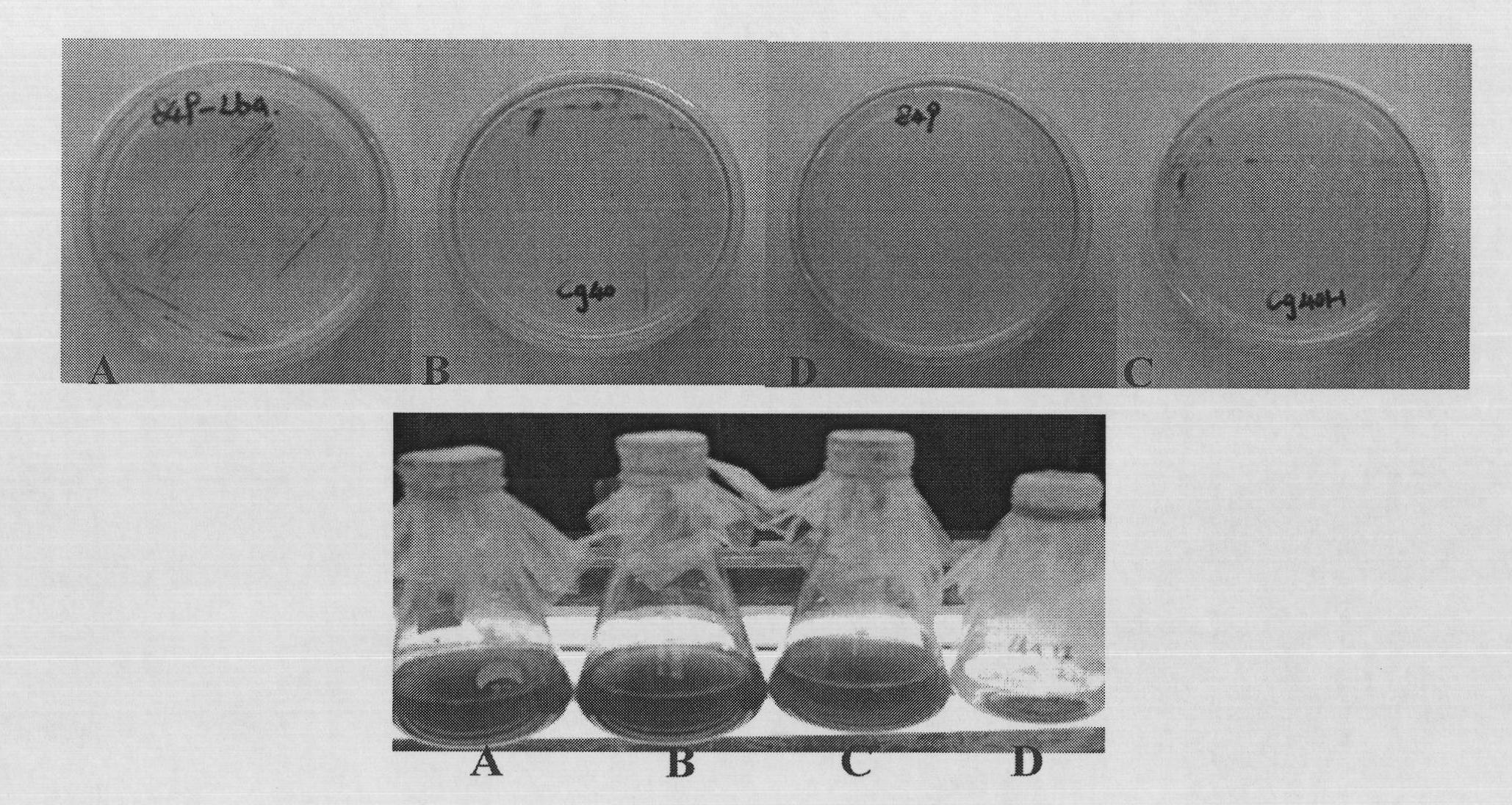Method for improving yield of chlamydomonas reinhardtii biological hydrogen production through soybean hemoglobin genes
A technology of hemoglobin and biological hydrogen production, applied in the direction of microorganism-based methods, biochemical equipment and methods, botany equipment and methods, etc., can solve the problems of affecting hydrogen production efficiency, affecting Chlamydomonas hydrogen production efficiency, growth inhibition of Chlamydomonas, etc. question
- Summary
- Abstract
- Description
- Claims
- Application Information
AI Technical Summary
Problems solved by technology
Method used
Image
Examples
Embodiment 1
[0068] Chlamydomonas reinhardtii and its cultivation:
[0069] Chlamydomonas reinhardtii is a representative species of photosynthetic hydrogen production by microalgae because of its fast growth rate, low culture cost, and high hydrogenase activity. In order to facilitate transgene manipulation, the present invention prefers Chlamydomonas reinhardtii species cc849 with a cell wall deficiency.
[0070]①Normal culture conditions: According to "The Chlamydomonas Sourcebook: a comprehensive guide to biology and laboratory use. New York: Academic Press. 1989" edited by Harris, preferably at 25±1°C, the intensity of sunlight (100-200mol photonsm -2 the s -1 ), the liquid culture is at 50~100ml Tris-Acetate-Phosphate (abbreviated as TAP) medium, initial pH7.2, horizontal shaker rotating speed 100~130rpm, every 5~6 days 1% inoculation subculture; Solid TAP (plate ) medium contains 1.5% agar powder, and the preservation and purification of the algae species is to pick a single clone...
Embodiment 2
[0074] Cloning of leghemoglobin subunit lba gene:
[0075] By standard methods known to those skilled in the art (Sambrook et al., Molecular Cloning. New York: Cold Spring Harbor Laboratory Press. 1998) and the manufacturer's instructions for the reagents used (QIAGEN TM , Promega TM ) to extract the total RNA and synthesize cDNA of soybean, and to detect the concentration and purity of the RNA. The specific implementation method is: take 0.1 g of soybean mature root nodules, grind them with liquid nitrogen, extract the total RNA of soybeans according to the QIAGEN RNeasy Plant Mini Kit reagent manufacturer's instructions, and detect its concentration and purity by ultraviolet spectrophotometry. with DNase I Water bath at 37°C for 30 minutes to remove the mixed DNA in the RNA; then add 25mM EDTA and bathe in water at 65°C for 10 minutes to terminate the activity of DNase I. Single-stranded cDNA was synthesized according to Promega TM AMVRT protocol manufacturer’s instruc...
Embodiment 3
[0080] Construction of Chlamydomonas reinhardtii chloroplast expression vector:
[0081] The Chlamydomonas reinhardtii chloroplast expression vector cg40 was described by standard methods known to those skilled in the art (Sambrook et al., Molecular Cloning. New York: Cold Spring Harbor Laboratory Press. 1998) and Vaistij et al. (The Plant Journal, 2000, 21 (5): 469-482) for vector construction. The specific implementation method is: use restriction endonucleases SmalI and SacI to digest the soybean Iba gene fragment and the carrier cg40 obtained by the above-mentioned clone respectively, and the purified Iba gene fragment is connected with T4DNA ligase through the above two enzyme cutting sites. After the aadA gene in the plasmid cg40 forms the aadA-lba fusion gene, the Chlamydomonas chloroplast expression vector cg401-1-lba ( figure 1 ), transformed Escherichia coli DH5α, extracted the plasmid, and identified by restriction endonuclease SmaI and SacI double digestion, obtai...
PUM
 Login to View More
Login to View More Abstract
Description
Claims
Application Information
 Login to View More
Login to View More - R&D
- Intellectual Property
- Life Sciences
- Materials
- Tech Scout
- Unparalleled Data Quality
- Higher Quality Content
- 60% Fewer Hallucinations
Browse by: Latest US Patents, China's latest patents, Technical Efficacy Thesaurus, Application Domain, Technology Topic, Popular Technical Reports.
© 2025 PatSnap. All rights reserved.Legal|Privacy policy|Modern Slavery Act Transparency Statement|Sitemap|About US| Contact US: help@patsnap.com



